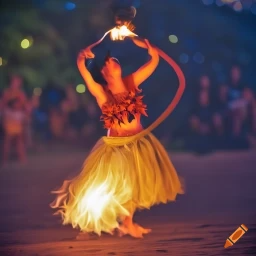Your cart is currently empty!

Hawaii’s Cultural Heritage: Unraveling the Rich Tapestry of the Islands
The Vibrant Tapestry of Hawaiian Culture
As a visitor to the beautiful islands of Hawaii, I was immediately captivated by the rich and vibrant tapestry of Hawaiian culture that permeates every aspect of life here. Hawaii’s cultural heritage is a treasure trove of traditions, customs, and practices that have been passed down through generations, and it is a true privilege to immerse oneself in this unique and captivating world.
Ancient Origins and Polynesian Influence
The roots of Hawaiian culture stretch back centuries to the early Polynesian voyagers who first settled in these enchanting islands. These intrepid explorers brought with them their language, beliefs, and practices, which became the foundation upon which Hawaiian culture was built. From the sacred art of hula dance to the melodious chants and mesmerizing rhythms of traditional music, the Polynesian influence is deeply embedded in the cultural fabric of Hawaii.
The Spirituality of Hawaiian Culture
At the heart of Hawaiian culture lies a deep spirituality and reverence for the land, known as “aina,” and the interconnectedness of all things. The native Hawaiians embraced a unique belief system known as “Huna,” which emphasizes harmony, balance, and respect for nature. This spiritual connection is evident in the sacred sites, known as “heiau,” scattered throughout the islands, where ancient rituals and ceremonies were performed to honor deities and seek guidance from ancestors.
Expressions of Art and Craftsmanship
One cannot explore Hawaiian culture without encountering its exquisite art and craftsmanship. From the intricate designs of Hawaiian quilts to the skillful weaving of lauhala mats and baskets, the artisans of Hawaii have preserved and celebrated their cultural heritage through their creative expressions. Traditional Hawaiian tattooing, known as “kakau,” is another powerful art form that tells stories of identity and heritage through symbols and patterns etched into the skin.
Cultural Celebrations and Festivals

Hawaii is renowned for its vibrant cultural celebrations and festivals that bring the community together in joyful revelry. The annual Merrie Monarch Festival, held in Hilo, showcases the art of hula and perpetuates the ancient traditions of storytelling through dance. The Aloha Festivals, held throughout the islands, pay homage to Hawaiian customs, music, and cuisine, inviting visitors and locals alike to immerse themselves in the vibrant spirit of aloha.
FAQ About Hawaii Cultural Heritage
What are some traditional Hawaiian foods?
Hawaii’s culinary heritage is as diverse as its cultural traditions. Some traditional Hawaiian foods include poi (a paste made from taro root), lomi lomi salmon (a dish made with salted salmon, tomatoes, and onions), kalua pig (roasted pig cooked in an underground imu oven), and haupia (a coconut milk-based dessert).
How can I experience Hawaiian cultural activities during my visit?
To immerse yourself in Hawaiian culture, consider attending a traditional hula performance, visiting a local museum or cultural center, participating in a lei-making workshop, or exploring historical sites and landmarks. Engaging with the local community and seeking out cultural events and festivals will offer an authentic and immersive experience of Hawaii’s cultural heritage.
Are there any specific protocols or customs I should be aware of?
Respecting local customs and traditions is essential when engaging with Hawaiian culture. It is customary to remove your shoes before entering someone’s home and to ask for permission before taking photographs or participating in sacred ceremonies. It is also considered respectful to learn a few basic Hawaiian words and phrases, such as “mahalo” (thank you) and “aloha” (love and greetings).
How can I support the preservation of Hawaiian cultural heritage?
There are several ways to support the preservation of Hawaiian cultural heritage. You can visit and support local cultural centers, museums, and historical sites, where your contribution helps maintain and protect these valuable resources. Additionally, purchasing authentic Hawaiian crafts and products directly from local artisans ensures that traditional arts and craftsmanship continue to thrive.
Exploring Hawaii’s cultural heritage is a captivating journey that reveals the deep-rooted traditions, spirituality, and creativity of the islands. From the ancient Polynesian influences to the expressive art forms and vibrant celebrations, Hawaii offers a rich tapestry of cultural experiences waiting to be discovered. By immersing ourselves in this awe-inspiring world and respecting its customs, we can not only appreciate the beauty of Hawaiian culture but also contribute to its preservation for generations to come. Mahalo and aloha!